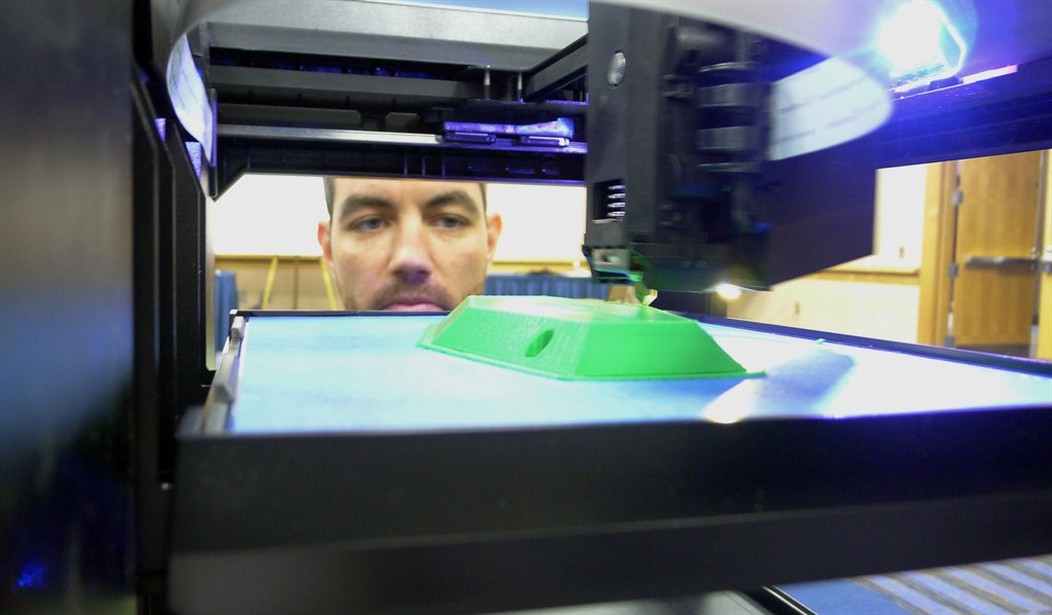The gun control movement is not only predicated on the false assumption that more guns lead to more crime, but that it's possible to actually dramatically curtail the number of guns in existence. More than one million firearms have been sold each month for more than four years, and we now have more than 400 million privately owned firearms in the U.S., which should be all the evidence needed to prove that trying to reduce the supply of firearms is a waste of time and money in addition to a blatant infringement of our Second Amendment rights.
But let's say for the sake of argument that the anti-gunners actually could make every firearm in the country disappear with a snap of their fingers. Thanks to advances in 3D printing, it's now possible to build a firearm from scratch with just a few hundred dollars worth of material. Guns are never going away, even if the forces of prohibition could somehow pull off the impossible and repeal the Second Amendment.
What about ammunition, though? After all, without bullets guns are just expensive paperweights, and if the anti's ever did manage to prohibit the sale and possession of firearms they'd certainly shut down the civilian ammo market too. If they can't curb access to firearms, surely it would be easier to block gun owners from acquiring ammunition, right?
Maybe not. As Purdue University professor Monique McClain recently detailed, researchers are using 3D printing to come up with "more efficent ways to make custom explosives and rocket propellants", including small arms ammunition.
3D printing allows you to make custom shapes, print multiple types of material in one part, and save money and material.
However, it is very challenging to 3D-print energetic materials for several reasons. Some energetic materials are very viscous, which means it is very hard to squeeze that mixture out of a tube with a small nozzle. Imagine squeezing clay out of a small syringe – the material is too thick to easily move through the small hole.
In addition, energetic materials can be dangerous if handled improperly. They can ignite if there is too much heat during the manufacturing process or during storage, or if they are exposed to a static electric shock.
... Many researchers are looking into 3D-printing gun propellants. Modifying the shape of gun propellants could make bullets that can fly farther.
Others have sought to use 3D printing to reduce the environmental impact of gun propellants and igniters that require harsh solvents to manufacture. These solvents are unsafe, difficult to dispose of and can harm the environment and peoples’ health.
McClain admits that 3D-printing things like gun propellants is still an emerging technology, so I doubt that Defense Distributed will be unveiling its Ghost Ammo Maker anytime soon. Still, the advances that McClain and other researchers are making are incredibly interesting, and I'm sure incredibly disturbing to gun control activists. Small-scale production of 3D-printed propellents is probably years away, but it sounds like it's absolutely feasible, and that means that one day it won't just be guns that are impossible to control through supply-side restrictions, but ammunition as well.
In a country with more legally owned guns than citizens, a right to keep and bear them, and the technology that allows people to easily build their own, the idea of banning our way to safety is an affront to both common sense and the Constitution. Instead of fruitlessly trying to choke off the supply to criminals by making it impossible for the rest of us to purchase or possess arms and ammunition, we need to invest in strategies that reduce the demand for guns by those most likely to use them in a violent crime; everything from effective community-based violence prevention programs to increasing the penalties for using a weapon in the commission of a crime. Gun control has never been a good idea, but advances in technology show that it's simply obsolete as well.









Join the conversation as a VIP Member